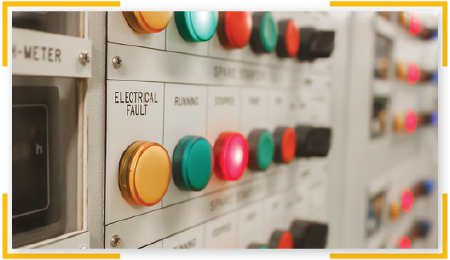
Electrical Services in New York
How It Works?

Step 1
You share electrical floor plan and equipment details

Step 2
Our experts work on load calculations and preparing load letter

Step 3
We process Con Edison Service Filing according to your building load and special electrical requirements.
Get In Touch
Need help or additional information?
Give us a call on
(786) 788-0295
Get in touch - 212-575-5300
Electrical Services in New York
- Shortest turnaround time of 2 weeks
- NEC and NYC code compliant electrical load calculation
- Electrical load letter with the Con Edison online format
- Optimal electrical service capacity to reduce costs
- Electric service filing and approval without delays
(Load Calculation - Load Letter - Filing Con Ed)
Code Compliant
Electrical load calculations according to the National Electrical Code and NYC Electrical Code.
Accurate Load Calculation
Electrical load letter filling and submission through the online Con Edison Project Center.
Hassle Free Pricing
Con Edison Service Filing according to your building load and special electrical requirements.
Electrical Services in New York

Consolidated Edison, Inc. provides electricity for most homes and businesses in New York City, and customers must meet several requirements before connecting to the service. A load calculation must be carried out for the entire property, and the results are then used to fill an electrical load letter. Finally, the service connection is filed with Con Edison, who will install a power meter once all requirements are met.
Electric current can deliver large amounts of energy in an instant, and modern power grids connect generation plants and buildings with minimal losses. However, since the Con Edison grid is shared by thousands of consumers, the company must make sure that nobody uses a risky connection. If a major electrical fault occurs in a building, it can leave a very large area without power.
During the design process, electrical engineers focus on optimizing the capacity of conductors and service equipment. Components that are sized too small will overheat with electric current, causing premature failure and possibly electrical faults. However, oversized components represent a waste of materials and skilled labor, making the installation more expensive than necessary.
A power meter separates the installations owned by Con Edison from those owned by the consumer, and the meter itself is also owned by Con Edison. The connection type will depend on the total electrical load of the building, and the type of power distribution available locally.
Importance of an Accurate Electrical Load Calculation

An electrical load calculation is necessary when sizing branch circuits, protection devices, distribution boards, feeder circuits and service equipment. As previously mentioned, undersized components cannot accomplish their function safely, but oversized components waste money.
When the electrical load is known accurately, Con Edison and the building owner both save money by installing the optimal capacity. Consider that connection costs are split - the owner assumes the cost of all components behind the meter, while Con Edison is responsible for connecting the meter to the power grid.
- Appliances and equipment with electric motors are normally the largest loads in buildings, and this applies for both homes and businesses. The compressors of air conditioning systems typically have the highest power consumption in residential and commercial buildings. Other large loads that are driven by motors include ventilation and pumping systems.
- Lighting is often the second-largest electrical load after motor equipment, especially in commercial buildings with long schedules. The NFPA 70 National Electrical Code specifies a design load of 3 watts per square foot, even when using lighting fixtures that consume less power, such as LEDs.
For design purposes, the electrical load of a building is not simply the sum of individual loads. Electrical engineers use a metric called the coincidence factor to describe the total load of a building, which is the maximum total load divided by the sum of individual loads. For example, if the individual loads add up 500 kilowatts, but the peak electrical consumption is 350 kW, the building has a coincidence factor of 0.70.
Adding all the loads directly would result in an oversized system, since some loads are never used simultaneously.
- For example, it would make no sense to add all air conditioning and space heating loads, since they are used at different times of the year. Some buildings may use air conditioning in some areas even when others are heated, but the two systems will not operate together at full capacity.
- Power outlets are another example: Buildings have a large number of receptacles for convenience, but using them all at full capacity at once is very unlikely.
To get an accurate electrical load calculation, the best recommendation is working with a professional engineering firm. This way, you can avoid the risks of using undersized components, while making sure you don’t spend on oversized systems either.
Electrical load calculations must follow the NFPA 70 National Electrical Code and the NYC Electrical Code. Meeting these requirements is important, to ensure a quick project approval with the NYC Department of Buildings. You will need an electrical load letter to file a service connection with Con Edison, and load calculations are a necessary step.
An electrical load calculation is not only required in new constructions, but also renovations and additions in existing buildings. These projects change the electricity consumption of a building, and modifications to the electrical service may be necessary.
Filling and Submitting an Electrical Load Letter
When an electrical load letter is mentioned, we tend to imagine a physical document. However, Con Edison has modernized the process, and electrical load letters are now submitted through an online form. Electrical engineers can concentrate on providing accurate information, since they don’t have to worry about a specific format.
Even if electrical load letters are digital, you still need accurate information, which is obtained with electrical load calculations. An electrical load letter must contain all the appliances and equipment used in a building, with the correct units. The power consumption of most electrical devices is expressed in watts or kilowatts, but motors built under North American standards have their nameplate capacity in horsepower (hp).
When purchasing or renting an apartment or commercial space, landlords may still require an electrical load letter in physical format. However, you can present the same calculation results that were used to fill the Con Edison form.
Con Edison has two different formats for residential and commercial load letters. This makes the submission even simpler, since the load letter format is configured automatically in each case. The residential and commercial formats are accessed online at the Con Edison Project Center.
- You must register and create a user profile to access the Project Center. Con Edison will request your contact information when creating the profile: phone number, email and physical address.
- The Con Edison Project Center allows user profiles for customers, architects, engineers, contractors, etc. However, only a Licensed Contractor can create a work request.
After completing the electrical load calculations, Nearby Engineers New York Engineers can fill the electrical load letter for you. We make sure that all information is provided correctly, so Con Edison can specify an adequate service connection for your building.
Filing an Electrical Service Connection with Con Edison
Con Edison classifies service applications from consumers into three main types: starting a new service, moving an existing service to a new address, or stopping a service. There are specific requirements in each case, and you can also request an account owner change if necessary.
When starting a new service with Con Edison, the requirements change for new customers and current customers:
- New customers must submit their address, their move-in date and a valid identification. The service can also be started without an ID, but the customer must pay a deposit.
- Current customers must submit their old and new address, with the corresponding move-out and move-in dates. Also, the move-in date must be within 30 days of the submission date. Current customers are required to have an online account.
When moving a service to a new address, customers must first submit their new zip code, to verify if the location is within the Con Edison service territory. Then, the requirements are the same as when starting a new service.
To stop a service with Con Edison, the customer can send an online request. Just keep in mind that the service cannot be stopped more than 30 days in advance.
In general, you must have completed an electrical load calculation to file a Con Edison service. Then you can fill the electrical load letter that corresponds with your project type - residential or commercial.
- For a residential service filing, you will be asked the number of new meters, total gross sq. ft. of dwellings, gross sq. ft. of common areas, and number of dwellings of each type - studio apartments, 1-bedroom, 2-bedroom, 3-bedroom, and loft or luxury units. Electric load items are then added, specifying their capacities in kilowatts (kW), kilovolt-amperes (kVA) or horsepower (hp).
- For a commercial service filing, you will be asked for the building usage, gross sq. ft., and the number of new meters.
When filing an electrical service, the point of entry (POE) will be determined by Con Edison based on convenience and cost optimization. However, you can request a preferred POE for an additional cost.
Con Edison provides standard service layouts for 1-3 family homes and commercial buildings. However, these are only provided as reference, and specific requirements are determined for each case. The standard service layouts indicate what a typical approved connection looks like.
When a project is submitted to Con Edison, the contact information of an assigned representative is sent to the customer within a week, with an Acknowledgement Letter and Case Number. Con Edison will request and schedule any preliminary meetings needed, and there is remote customer service available 24/7.
Electrical Service Connection Types: Overhead and Underground

Depending on the type of electric power distribution available, Con Edison will specify either an overhead or an underground connection for your property. When an overhead service is specified, you can request an underground connection from the closest distribution pole. However, the opposite does not apply - you cannot request an overhead connection when only an underground distribution is available from Con Edison.
When receiving an underground service, the installation must be carried out after the water and sewer mains, but before any sidewalks. This is an important consideration when scheduling your project. Also, any excavations and groundwork must be notified 2 to 10 days in advance, and Con Edison will provide a layout of existing buried installations and required clearances.
When overhead power lines are present, no work is allowed until Con Edison indicates it is safe to proceed.
Filing an Electrical Service in Buildings with Distributed Generation
Buildings that generate their own electricity can also get a service connection from Con Edison, but they must meet special requirements. A generation system helps building owners reduce their power bills, but safety measures must be taken when connecting to the local grid. For example, if Con Edison disconnects a distribution circuit to provide maintenance, consumers with their own generation systems must not feed electricity into that circuit, since technical personnel may be working on power lines.
Generation systems up to 20 MW that support a customer facility are considered distributed generation (DG) by Con Edison. This includes combined heat and power systems, which produce heat as a secondary product to boost efficiency.The term distributed generation covers both renewable and nonrenewable sources.
In general, a grid-tied generation system can operate if it does not affect other customers, equipment, personnel or the quality of service. In May 2019, Con Edison launched a new program that simplifies the connection requirements for distributed energy resources.
Emergency generators are required by the NYC Building Code, and they are not considered distributed generation by Con Edison if they meet two requirements:
- Operating only as backup, and not simultaneously with the Con Edison power supply.
- Supplying power only to the building, without exporting any of their electricity output to the local grid.
Any building owners who plan to use a backup generator simultaneously with the Con Edison power supply must meet the requirements and approval procedure of distributed generation.



